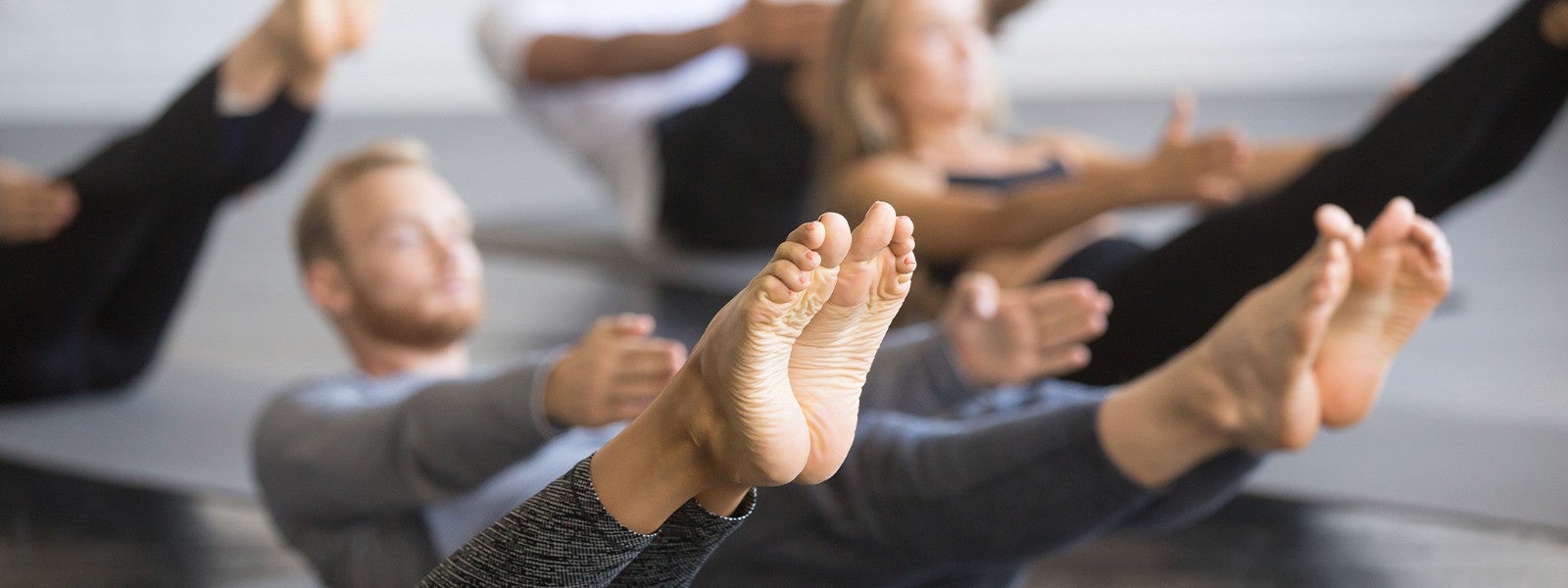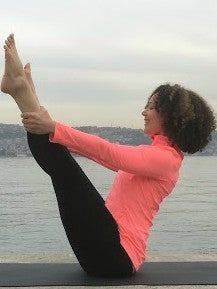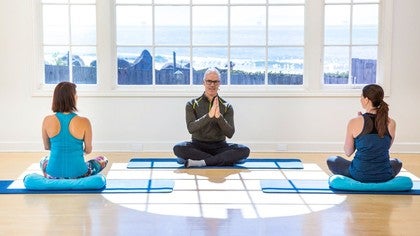
Choosing the Right Teacher Training Program
Being a Pilates teacher can be a lucrative, life-enhancing, and fulfilling adventure, but the path to get there requires investing considerable time, energy, and money. Whether you’re a Pilates enthusiast who wants to delve deeper into the method, a personal trainer or physiotherapist looking to add some new skills to your toolbox, or an entrepreneur or creative looking for a side hustle, we’ve created this guide for you. Read on to discover what to consider before embarking on a Pilates teacher training program.
Why
Knowing why you want to take teacher training will clarify your decision and narrow down the choices in terms of training, cost, and overall commitment. Is your goal to deepen your own Pilates practice, run your own fitness business, or travel the globe teaching internationally? Depending upon your interests, one program might be a better fit than another. Similarly, if your hope is to teach Mat classes at the local fitness center, you won’t need the kind of comprehensive certification that’s expected of someone who works in a studio setting.
Types of Training Program
Training programs are usually divided into those that teach "Classical" and those that teach "Contemporary" Pilates. The former refers to programs that hew to the original method and those of Pilates "elders" who studied with Joe or Clara Pilates (for example, Romana’s Pilates). Contemporary refers to programs that encompass a broader range of Pilates exercises, often with an emphasis on rehabilitation.
We’ve compiled a list of some of the most reputable and internationally recognized teacher training programs/schools. Please note this is not an exhaustive list and there are many smaller, exceptional teacher training programs.
- BASI Pilates
- STOTT Pilates
- Balanced Body
- Body Control Pilates
- Polestar Pilates
- Equinox Pilates Institute
- Romana’s Pilates
- Power Pilates
- Alan Herdman Pilates
- MK Pilates
Beyond the school’s philosophy and the lineage of its teacher trainers, you’ll also want to learn as much as you can about the nuts and bolts of a particular training program. The desirability of a particular certification may vary depending on where in the world you live and teach. While there are globally recognized schools and brands with authorized training studios around the world, there are also smaller, local schools that offer exceptional training but don’t enjoy the same name recognition outside of their local community. A nationally or internationally recognized certification can open doors, particularly if you expect to move around. On the other hand, smaller training programs tend to recruit new teachers from the ranks of their own training programs.
All training programs consist of practical hours during which you watch and learn the exercises in a studio setting as well as additional hours for observation, practice teaching, self-practice, and finally a written and practical examination. Almost all programs start the process with the foundational Mat work. Some teacher training programs offer stand-alone Mat certification or Reformer certification, and many offer a combination of Mat/Reformer work with the option of adding the rest of the apparatuses. A comprehensive training typically includes Mat, Reformer, Cadillac, Chair, Ped-O-Pul, and Barrels, as well as lectures on anatomy and modifications for specialized populations (pre/postnatal, injuries, seniors, etc). Some programs will also include information on the business side of teaching.
Programs are divided into modules. The Mat work alone, including in-class and self-study hours, takes anywhere from 150 to 180 hours over the course of six to twelve weeks (depending upon whether the program is an intensive or standard-paced one). The comprehensive course typically requires 500 to 600 hours over a period of six months to one year. You’ll usually have up to one year to complete your written and practical examination upon completion of the course modules.
Because of COVID-19, teacher training programs have had to adapt. Right now, with many studios still closed, there are more online options than in-person training. Most programs, however, still require some in-person training where possible. The amount of online versus in-person hours will vary according to each school, as well as the pace of the rollout and distribution of COVID-19 vaccines and local public health regulations. That said, one positive result of the pandemic is that teacher training is more accessible than ever before because some of the teachings have gravitated online, making it possible to study with teachers from anywhere in the world.
Investment
Becoming a Pilates teacher is an investment. Like any worthwhile endeavor, it requires hard work, intelligence, a little bit of hustle, and passion. Buyer beware: teacher training programs that claim to certify you after a single weekend of training are not considered reputable. The scope of the training is reflected in the cost, which can be substantial. Expect to pay between $900 to $1500 USD for Mat programs and anywhere from $4500 to $6500 USD for a comprehensive program. Teacher training programs should have their prices clearly listed on their website. There may be additional fees for manuals or books, prerequisite costs (see below), or examination or certification fees. Many training centers offer payment plans and scholarships. While budgeting, also keep in mind transportation costs, time away from paid work, and eventually the cost of professional liability insurance and continuing education.
Factors to Consider
You may have to meet certain prerequisites to be accepted into a teacher training program. These can vary from program to program, but the most common requirements are some form of movement experience in sports, dance, or other modalities such as yoga, as well as previous Pilates experience. Some programs require trainees to complete a certain number of private sessions taught by an instructor affiliated with the training program before starting the training program or over the course of the training program.
When choosing a training program, it’s helpful to think about the type of Pilates instructor you would like to be. If you are inspired by a local instructor, reach out either in person if possible or via email or social media and ask where she studied. Most Pilates instructors have a website or some type of online presence that often includes information about his or her training. Consider your personality, too. You may prefer a large pool of fellow trainees with whom you can start creating your Pilates network and community. Some of these training buddies may end up being lifelong friends or colleagues. Depending upon your life stage, you may be happier in a mentorship situation, in which a handful of trainees work with one master instructor, similar to the way that Pilates was handed down by the "elders" who studied with Joe and Clara Pilates in the days before teacher training programs existed.
If you see yourself working in a health club or group fitness setting, a program that is affiliated with this type of business will give you a leg up in the field. If you want to work in a clinical setting, such as in a chiropractor’s office or with a sports or dance program, choose a program that will provide a good foundation for that type of teaching. And if you would like to open your own studio one day, either digital or in real life, learning from a teacher-entrepreneur will help you balance your life as a teacher with your role as a business owner.
Beyond the Teacher Training
A good Pilates instructor never stops learning. Even after the ink is dry on your certification, you’ll want to continue to hone your skills. This can take the form of attending conferences (provided we continue to gather in large groups), taking workshops either online or in-person and seeking out formal or informal mentorships with more seasoned instructors. Mid-career, you may become curious about another school of Pilates and decide to get a second or "master’s-level" certification. Several contemporary or classical training programs offer bridge programs for experienced instructors who were initially trained in a different style of Pilates. You may even decide to increase your knowledge and marketability by becoming trained in a related modality such as yoga or barre fitness.
Keep in mind that the focus of most Pilates teacher training schools is the work itself: the exercises, the equipment, and the art of communicating with a client or students. That’s as it should be. As Pilates has grown more and more popular, however, there’s also been a recognition that it’s a business, too. Specialized coaches from within and outside of the Pilates industry offer resources for the independent instructor and studio owner seeking to boost their business to the next level. Industry observers also expect the pandemic to create new and different opportunities for teaching and earning a living from Pilates, so keep an open mind about what your future teaching environment might look like. It just might be a laptop open on your dining room table.
There’s so much information to absorb that it can be daunting when you start your journey to become a Pilates instructor. We suggest you take it one step at a time. Becoming a Pilates teacher doesn’t end with the completion of your certification program. Rather, it’s an ongoing process of seeking deeper understanding through specialized continuing education, mentorships, and most importantly, the experience of teaching. We wish you the best of luck on your journey!
Comments
No comments yet. Be the first!













You need to be a subscriber to post a comment.
Please Log In or Create an Account to start your free trial.